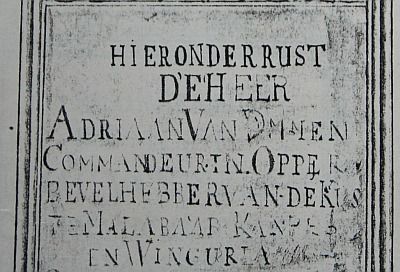
Fort Kochi - Adriaan van Ommen
A drawing was made of the tombstone of Adriaan van Ommen at the end of the 19th century. At that time, the stone was already in a poor condition, and is still now. The stone must have been commissioned by someone who knew a thing or two about him and cared enough about him to spend so much money. The stone was decorated with a family coat of arms and mentions Adriaan's age, indicated in days, months, and years. The date of death is carved out as 27th November 1696.[i] The engraver of the stone left his age somewhat blurry, so that it remains guesswork what it said. Only the 38 years have clearly been copied and once 2 months and 5 days were added. His date of birth should then be around 22 or 23 of September 1658. The baptism date is usually within 6 weeks thereafter, with exceptions.
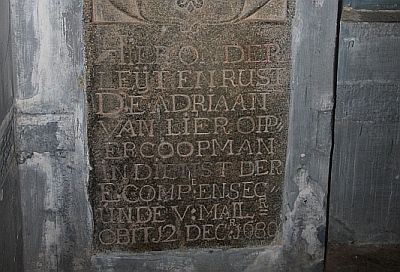
Fort Kochi - Adriaen van Lier
In 2025 it will be 345 years since Adriaen van Lier was buried in the St. Francis Church in Cochin. That location is not unusual, you would say at first glance. After all, he was opperkoopman and secundo of the VOC trading post in Cochin. It was fitting that he was taken to his final resting place with all respect and ceremony, but in his case the choice of St. Francis Church was not self-evident. During the presence of the VOC, the church was a Protestant church and Adriaen van Lier was a Catholic.
While the now Protestant Holland was involved in the Eighty Years' War (1568-1648) against Catholic Spanish rule and the battle intensified, Adriaen van Lier was born in Delft around 1620. Catholicism was not forbidden, but it was banned from public life and the profession of faith was pushed back to hidden churches. Positions in governments were officially not accessible to people of other faiths.
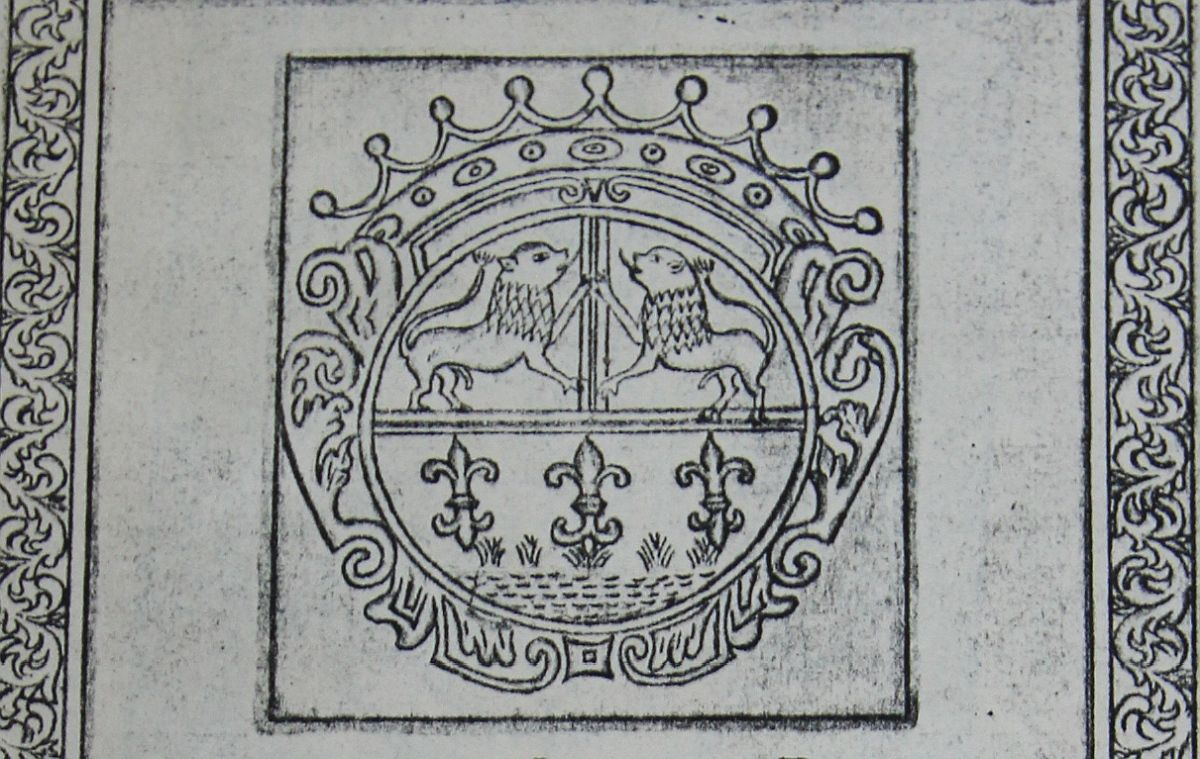
Fort Kochi - Abraham Cornelis de la Haye
In August 1752, head merchant Abraham de la Haye feels that his time is almost up. Only 43 years old, he becomes sicker and weaker by the day, realising the uncertainty of his life. Life had looked so promising. He had joined the VOC in Batavia in 1723 as a ‘soldier of the pen’ and had risen to the rank of head merchant. For the past two years, he had served as the provisional supreme commander of Cochin and the Malabar Coast. Just a year ago, his family had grown with the addition of a son. He had named him Robbert Christoffel — Robbert after his own father, and Christoffel after his father-in-law. Robbert was baptised in St. Francis Church in Cochin, close to his home. The same church where he will soon be buried. Before it comes to that, he still has some matters to settle, including changing his will. Together with his wife, Geertruijda Walling, he had already made a will, but back then there were no children; now there are three. He has held administrative positions all his life as an accountant, tax officer, chief administrator, and secretary. He was born in Colombo and, as a child, moved with his parents and his brother Huijbert to Batavia. With his own family, he went to Surat in northern India, and now the end is approaching in Cochin.
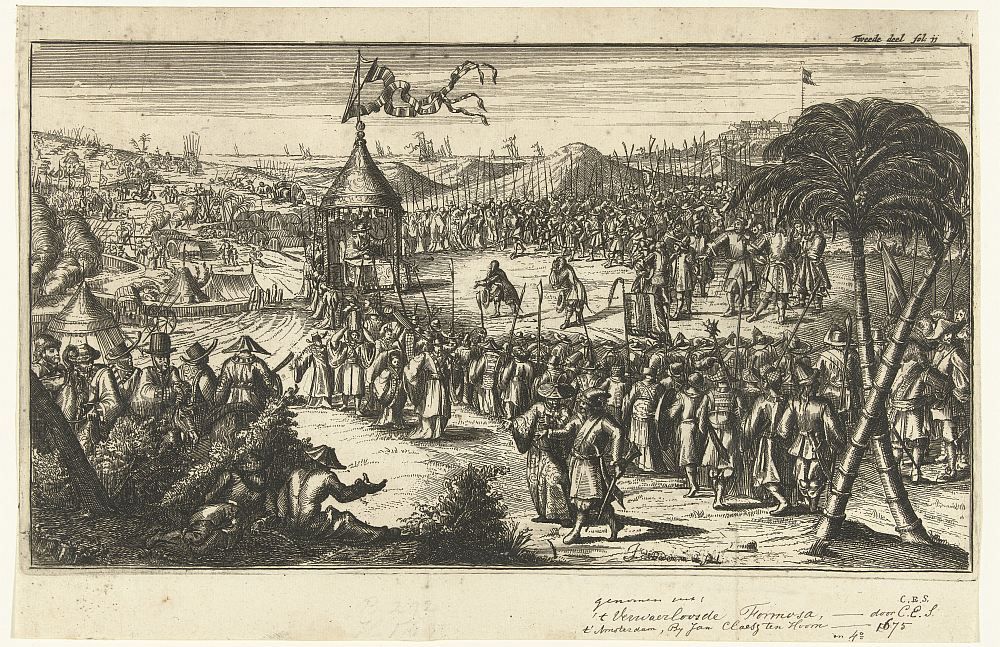
Fort Kochi - Barend Hermanssoon
On 22 October 1655, the Zeeland Chamber of the Dutch East India Company (VOC) approved the decision that at least 4,000 men would be transported to the Dutch East Indies with the upcoming winter fleet because of the great lack of personnel.[i] After only a week, they started hiring staff. On November 8, 1655, corporal Barend Hermanszn van Groningen was hired for the ship Ter Tholen with a salary of fourteen guilders per month. Already on the 23rd of November the decision was made to appoint him as a sergeant with a salary of eighteen guilders.[ii].[iii] On 30 December, the drums were beaten to allow the people of the ship Ter Tholen to board, after which they anchored off Vlissingen until favourable weather for departure. On 6 January 1656, skipper Daniel Looper left the roadstead and needed 6 months and 13 days to arrive in Batavia.
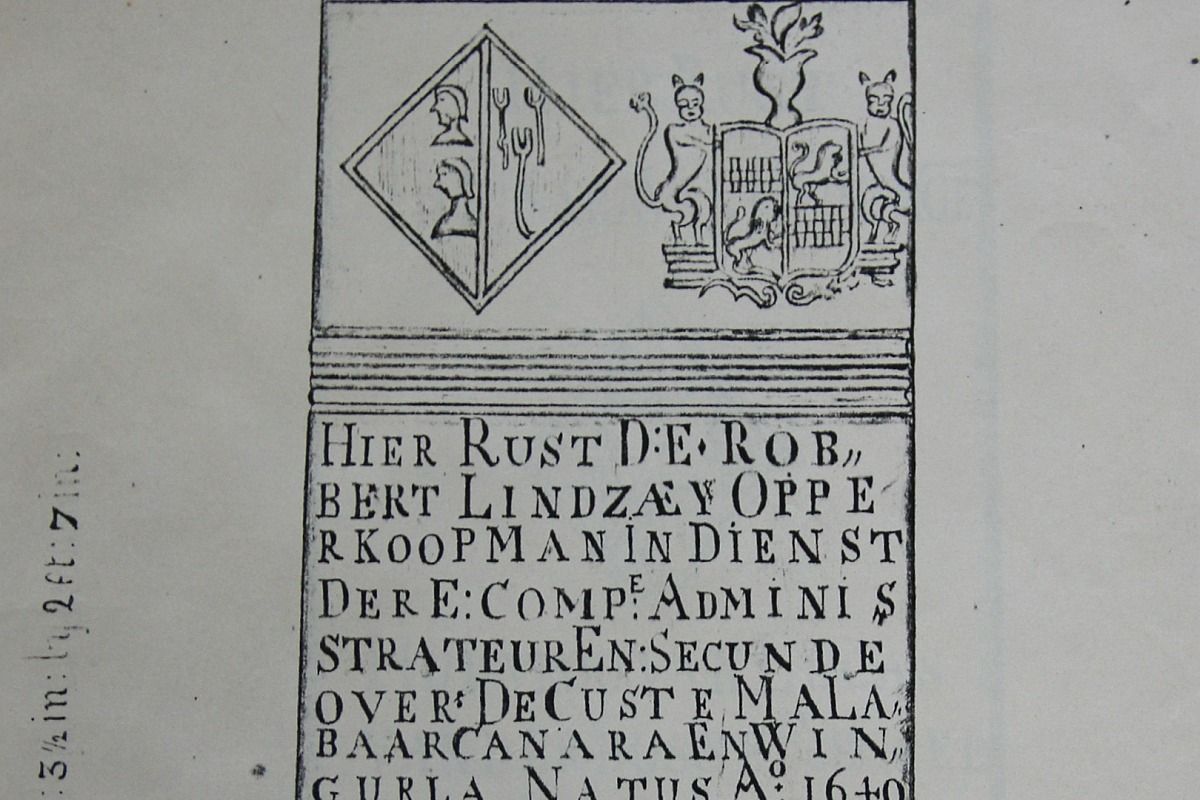
Fort Kochi - Robbert Lindzaij
Just as would have happened in the Netherlands, Robbert Lindzaij, administrator and secundo over the coast of Malabar, Canara and Wingurla, was buried in the church after his death. In this case, in St. Francis Church in Cochin. After closing his eyes forever on New Year's Eve, 31 December 1690, he was the last to be buried in the family grave. His wife, Margrita Minnes, and her parents, Pieter Minnes and Adriana Boogaerts, had preceded him. The tombstone makes it clear that Robbert Lindzaij is the most important person in the grave. Because of his high position, the funeral must have been accompanied by much ceremony.
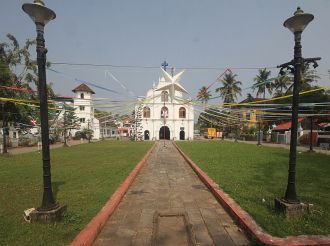
Vypin - Johan Hendrik Medeler
Trumpeter in the service of the VOC
In the winter of 1739, Johan Hendrik Medeler from Braakel[i] boarded the ship Gaasperdam of the Chamber of Amsterdam to sail to Ceylon as a trumpeter. Sub-merchant Jacob Balde immediately had his hands full with sick crew members who wanted to make their wills, but also with statements from various passengers about the behaviour of the quartermaster Jacob Jansz Kerkemijer who threatened, deceived, defrauded and mistreated the ordinary people "with great inflation on their character" in all kinds of ways. The ship's council had to be involved while the ship was in disarray at a boatyard in Portugal[ii]. Kerkemeijer was condemned to [iii] be beaten with a rope and demoted to sailor for nine guilders a month. The belongings of all the deceased crew members were immediately inventoried and sold at the mast. After the death of the second master on 7 May 1739, Johan Medeler bought his 8 "medicineese" books for three guilders. [iv] A curious purchase for a trumpeter.
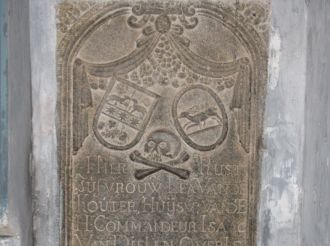
Fort Kochi - Isaac Pieterszn van Dielen and Lea de Kouter
On 6 April, 1663, little Lea de Kouter walked with her mother to the cabin of a ship on the roadstead of the Cape of Good Hope. A girl with the beautiful name Virena would be baptized that morning. [i] The vicar who was to baptize the child, Balthasar de Meter, had just arrived from Holland and was due to sail on to the Indies. She had just arrived from the Indies and was going to travel through to Holland, a unknown country to her. Would they have consciously seen each other? Would Lea remember him when, years later, she arrived at Cochin and found his tombstone in the church, not aware that they would soon be buried together in the same church forever?
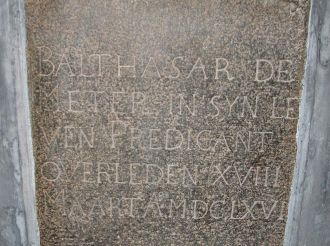
Fort Kochi - Balthasar de Meter
On 11 August 1646, the Heren XVII took the decision to do something about the shortage of clergymen in Asia with the coming outgoing fleet. Six ministers, not Germans, but only educated men, would be sent out. The chambers Amsterdam and Zeeland would each take care of 2 ministers and the Zuider- and Noorderkwartier each for one minister.[i]
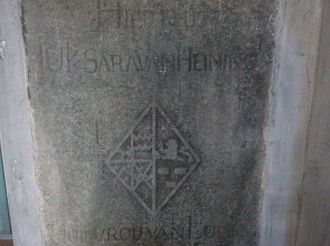
Fort Kochi - Sara van Heiningen
In the wall of the St. Francis church in Kochi is the tombstone that Lucas van der Dussen had made in memory of his Sara. Sara was given the dubious honor of being the first Dutch woman to die in Kochi and her stone is the oldest known Dutch tombstone in this area on the Malabar coast.
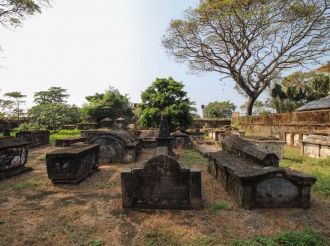
Fort Kochi - Overview of Dutch-related tombs at the Dutch Cemetery
Over the past 130 years, several inventories have been carried out at the Dutch Cemetery, of which Cotton's List of inscriptions on tomb and monuments in Madras (1905/1945) is the most famous. However, Cotton did not identify all monuments as Dutch, which were recognized in later inventories. Some monuments, on the other hand, have disappeared or their text plate is no longer legible. The table below offers an overview of several inventories of the Dutch Cemetery. And presented here is an visual overview of grave monuments found in 2020 by the joint team of Dodenakkers.nl (René ten Dam) and the Cultural Heritage Agency of the Netherlands (Leon Bok and Nanette de Jong). Also are mentioned the two monuments previously recorded by Cotton and the one by Singh, which all three not found by the 2020-team.
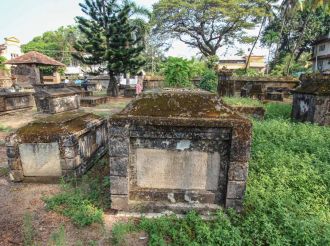
Fort Kochi - Johannes Wolff (1748-1815) en Catharina Sara Smit (1760-1820)
The funerary monument of the Wolff family does not provide many clues about who is buried here. No first names and even the surname of the woman is not known with certainty, nor the place where they were born. Despite the fact that they are buried in the Dutch cemetery, the name could just as well indicate an English, Belgian or German origin.
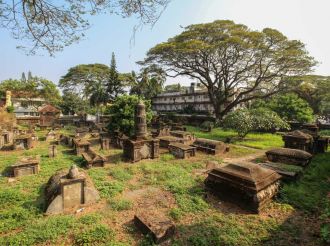
Fort Kochi - Jacob Krantz (1735-1787) and Maria de Rode (1771-1798)
Jacob Kraus van Edenburg, captain-lieutenant and commander of the artillery, was born on 13 February 1735 in Edenburg and died 26 January 1787 in Kochi. He was married to Klara Elisabeth Schaak. Maria Elisabeth de Rode was born 22 October 1771 and died on 10 January 1798 in Tranquebar. She was married to Johan Casper Kautz and adopted daughter of Jacob Krantz and Klara Elisabeth Schaak.
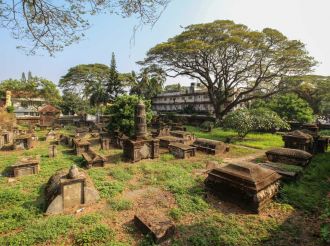
Fort Kochi - Daniel van der Sloot (1737-1807)
Daniel van der Sloot was the youngest of ten children of Abraham van der Sloot and Maria Weijns. An exact date of birth or baptism is unknown, but he must have been born in Kochi around 1737 and was buried there in July 1807.
Abraham Abrahamszn van der Sloot was baptized on 10 March 1690 in Amsterdam and came in 1711 as a soldier with the Wateringen to Batavia (modern day Jakarta, Indonesia). Once arrived, he was able to show that he had more to offer. In 1716 he was appointed as a schoolmaster in Kochi and was later also appointed as a sexton.[i] He married Maria Weijns around 1716, who was probably born in Batavia. The six sons and four daughters of this marriage all received a good education and were good at reading, arithmetic and writing. They all reached adulthood and most of them married partners who in almost all cases also came from VOC families. An extensive network was created from which they will all have benefited for a number of generations.[ii]
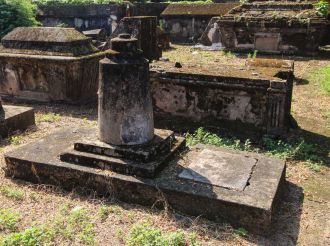
Fort Kochi - Jacob Bernard Weinsheimer (1745-1790)
Jacob Bernhard Weinsheimer was born on 25 November 1745 in Solsenheim, Germany and he died on 1 March 1790 in Kochi. He left on 19 May 1763 as a soldier with the Vrouwe Petronella of the Enkhuizen chamber as Jacob Bernard Weijns Heijmer van Sassenheim for Colombo.[i] He made a career in Ceylon and in January 1781 he was transferred to Kochi. He was in the prime of his life and got to know Wilhelmina van Harn. At first sight an attractive match, because she was the daughter of Reinier van Harn, titular chief merchant, ‘secunde’ and principal administrator of Mallabaar.[ii] There was one blemish about this young lady, however, and that was that her parents never married. Her mother was the free woman Elizabeth van der Werff.
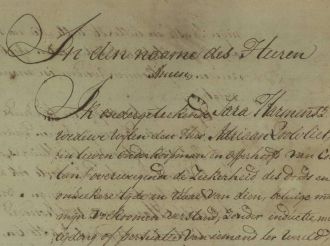
Fort Kochi - Adriaan Poolvliet (bef.1736-1799)
Adriaan Poolvliet was born before 1736 in Cananor and died on 10 September 1799 in Kochi. His parents were the surgeon François Poolvliet van Cochin[i] and Francina Danzer.
Adriaan lost his mother early on. In 1736 his father François had to deposit all the maternal inheritance in the orphanage for his young sons Adriaan and Johannes.[ii] As far as we know, his father has not remarried. Because Adriaan still had his grandmother in the house for a while, it is not inconceivable that this Ina Ringenkamp, also a young widow of François Poolvliet Sr., already lived in the house with her son. Because Francois Jr. spent a large part of his life in Cananor, this partly escapes the administration of Kochi.
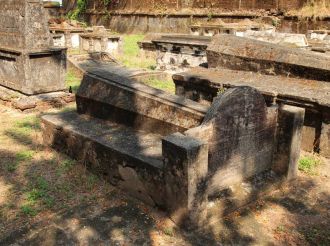
Fort Kochi - Johannes van Blankenberg (1749-1794)
Johannes van Blankenberg was born on May 18, 1749 in Nieuwvliet in Zeeuws-Vlaanderen as son of Johanna Boone and Jannis van Blankenberg. In India he probably married in 1779, aged 30, the fourteen-year-old Anna Helena Daimichen, daughter of Johan Andreas Daimichen and Pasquelle Lucas Smit. They had a daughter, Johanna Susanna, baptized in Kochi in July 1786.
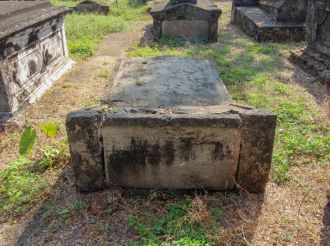
Fort Kochi - Dorothea Lambertina Zeijsig (1774-1800)
Dorothea's date of birth and death is only known from her tombstone at the Dutch cemetery in Kochi. She was born 6 November 1774 and died 10 November 1800. She was only 26 years and 4 days old at the time. From the fragmentary preserved baptism and marriage records of Kochi we know that she was baptized in November 1774 as the daughter of Jeremias Zeijsig[i] and Cornelia Elisabeth van der Weijden. The baptismal witnesses were Jan Lambertus van Spall and Maria Margaretha Prins. Dorothea had an older sister named Cornelia Ernestina. She was born and baptized in November or December 1770.[ii]
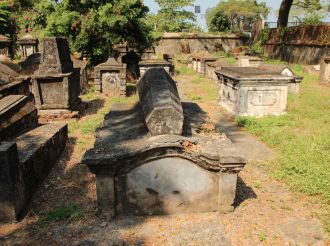
Fort Kochi - Johan Daimichen (1728-1784)
The German Johan Daimichen had already made a long journey before he arrived in Amsterdam from Lubeck and probably fell into the hands of crimps of the VOC. With a debt of 150 guilders to a certain M. Meijers, he was registered as Johan Andreas Deijmiche on 28 April 1751 by the bookkeeper of the VOC.
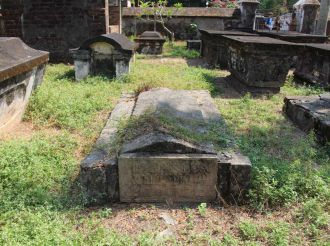
Fort Kochi - Johan Adam Cellarius (1740-1796)
When the Oosthuizen, a ship of the Hoorn chamber, leaves the Texel roadstead on 19 May 1762, this also means a definitive farewell to Europe for the man who appears in the pay book as Corporal Jan Adam Zelarius. He was born in 1740 as the son of Johan Jacob Cellarius and Maria Miller from Olm (Ulm), in present-day Germany.[i] Correct spelling of name and place of birth, even if a false identity was given, was important because the salary records were kept in the pay book during the entire service period. That Cellarius was aware of this is apparent from the fact that he wrote a letter to the Hoorn room in which he confirmed the correct spelling of his name and place of birth. A wise decision, because Cellarius had his annual pay statement collected by authorized representatives. In this way, his entire earnings over all those years could be used from Dutch trading houses to invest more than 10,000 guilders in real estate in Ulm (Germany) and in trading contacts in Europe.
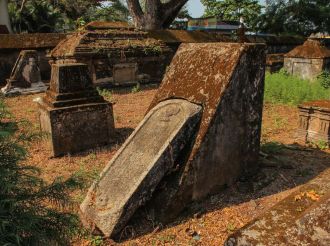
Fort Kochi - Cornelia Elisabeth Vogt (1784-1804)
Cornelia Elisabeth Vogt was born on 29 October 1784 in Kochi as daughter of the ‘vuurwerker’[i] Johan Hendrik Vogt from Nassau in Germany and Augustina Johanna Claassens.[ii] On 7 November she was christened with Johan Gustaaf Claassens and Maria Verhulst as witnesses. She would become the second wife of Carl Philip von Ochsee, from Ixheim in Germany.
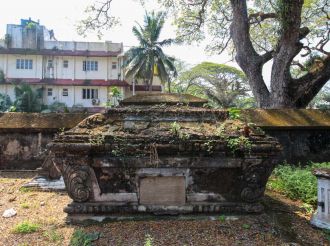
Fort Kochi - Aletta Augustina Thiel (1760-1784)
The lives of VOC women are hardly described and difficult to reconstruct. Only based on the information about their fathers and husbands is it possible to give some insight into their lives. For example, in Kochi Aletta Augustina Thiel is buried. We only know her date of birth and death because of the inscription on her tomb: Born 21 April 1760 and died 30 November 1784. So, she was only 24 and a half years old, and she was the wife of Jan Lambertus van Spall, a junior merchant from Utrecht (the Netherlands) who worked his way up to be the last Dutch governor of Kochi. He served as governor between 1793 and 1795.

Fort Kochi - Dutch Cemetery
Close to Fort Kochi's former bastion Gelderland the Dutch Cemetery is located, a silent testimony to the Dutch presence in this coastal town. In 1663, the Dutch took what was then Fort Manuel, built by the Portuguese. The original fort was considerably reduced in size by the Dutch for cost reasons and they also made the necessary adjustments within the fort. St. Francis Church was used by the Dutch for Protestant worship, while other Portuguese churches were demolished. The Santa Cruz Cathedral was even converted into a warehouse.
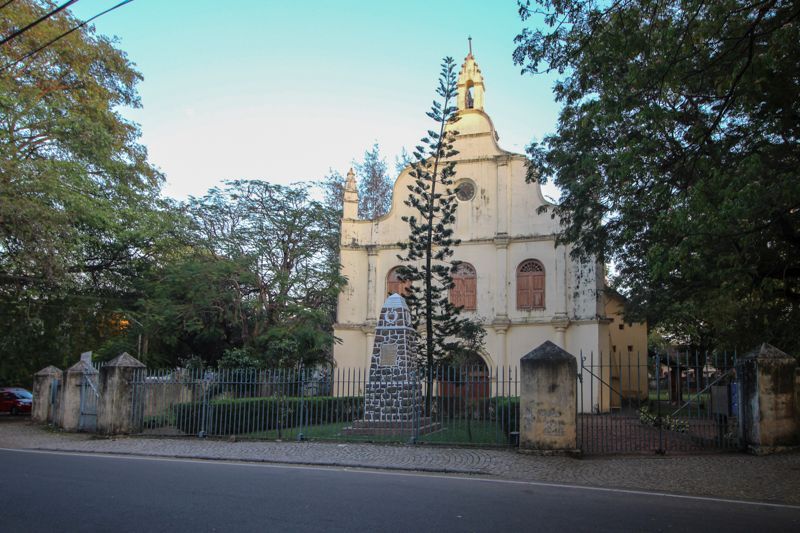
Fort Kochi - St Francis Church
According to oral tradition, it was the apostle Thomas who introduced Christianity to India in AD 52.[1] Today, the Mar Thoma Christians, the Christians of Saint Thomas (also called Thomas Christians), still live along the coast of Malabar. They belong to the churches of the Assyrian tradition, of which Saint Thomas is said to have been the founder in India.[2] These Assyrian Christians speak Syriac, a dialect of Aramaic, the language that Jesus spoke. Their churches are simple, with hardly any furniture and where the community sits on floor mats, like in Hindu temples.
IIndia was not an unknown country for the people of the Levant. According to legend, the first Jews settled in the kingdom of Cochin during the time of Israel's King Solomon, but a much larger group of Jews did not come to India until after the destruction of the Temple in Jerusalem in AD 70. They settled in Cranganore.[3]
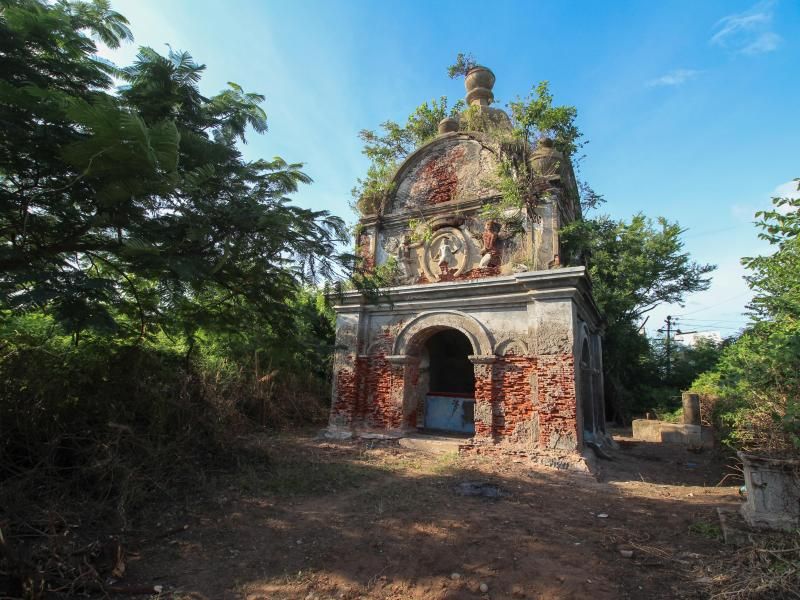
Nagapattinam - Short introduction to Karikop
Not long after the Dutch conquered the fort at Nagapattinam from the Portuguese in 1665, a new cemetery was put into use, further inland. The cemetery is known today as "karikop", a corruption of the Dutch word "kerkhof", meaning churchyard.
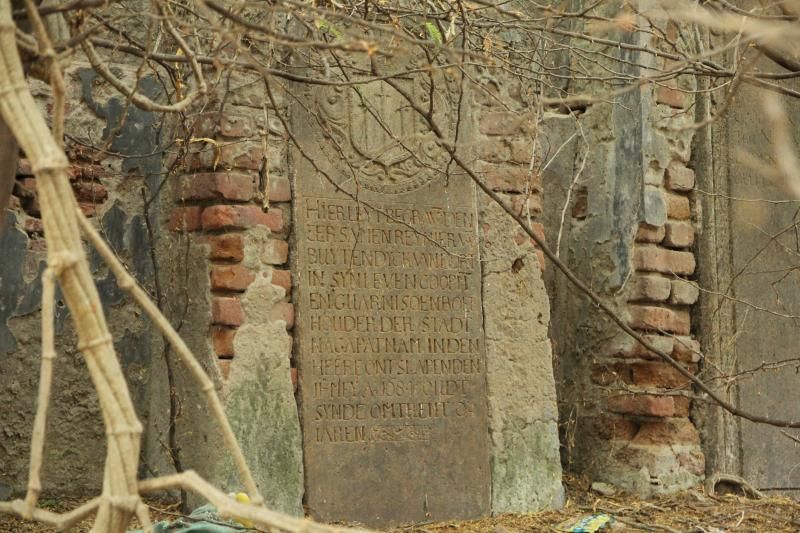
Nagapattinam - Old Cemetery
In 1658 the VOC captured the Portuguese fort at Nagapattinam. In addition to textiles, the VOC traded in Nagapattinam also in elephants, which were caught in Ceylon and sold here to Indian rulers. However, the fort was large and therefore too expensive to maintain. After it was decided in 1687 to move the Coromandel headquarters from Pulicat to Nagapattinam, construction began on a new and smaller fortress, the "Vijf Sinnen". Remnants of the houses and walls that had been destroyed in a great tidal wave in 1680 were used for the construction. In 1781 Nagapattinam was captured by the British and the Dutch trade went back to Pulicat. Nagapattinam would then remain in British possession.
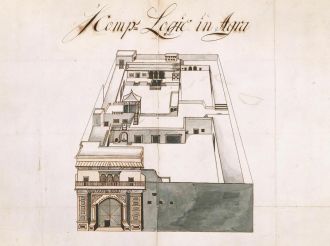
Agra - Remains of the Dutch Garden
In 1621 the VOC established a factory in Agra. The first head of the local VOC lodge was Wouter Heuten, who died in 1623 and was probably buried in the garden. Even though the Dutch were not on good terms with the English, they did offer them the opportunity to bury their dead in the garden of the Dutch lodge. The English had a factory in Agra, but no garden. It is believed that in the mid-nineteenth century, well after the departure of the Dutch from Agra in 1720, the St. Pauls Church was built on the site of the Dutch garden. In addition, a Protestant cemetery was created.
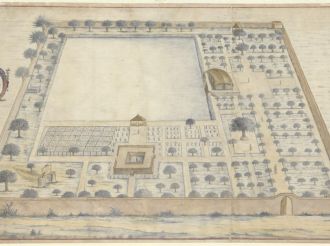
Chhapra - ‘Scomp:s thuyn’
Saltpetre, an important raw material for gunpowder, was extracted nearby the cities of Patna and Chhapra. Opium was also traded. The VOC establishment in Chhapra was established around 1650, not long after the establishment in Patna. The Chhapra branch soon became more important and eventually housed all the Dutch staff. In addition to a living area, the lodge of the VOC consisted of a saltpetre factory and a garden.
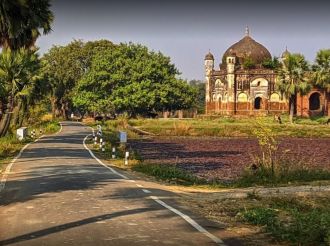
Chhapra - Remains of the Cemetery
Around 1670 the VOC factory in Patna was run by a Banya, a local merchant. The factory in Chhapra became more important and it was home to many Dutch personnel. Initially burials were done in the garden (SC-IND-004), but presumably because of the high mortality, a Dutch cemetery was built just outside Chhapra near Karinga.
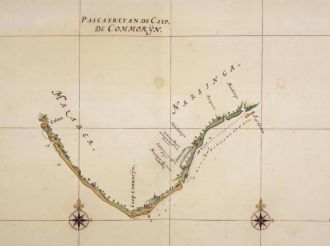
Cape Comorin - A single slab
J.J. Cotton mentions in his List of inscriptions on tombs or monuments in Madras Volume I (Revised edition 1945, p. 185) a hefty granite slab (9 feet by 3 ½) located at the entrance of St. Mary's Church in Cape Comorin and originating from an adjacent cemetery. A Dutch factory would previously have been located on the site.
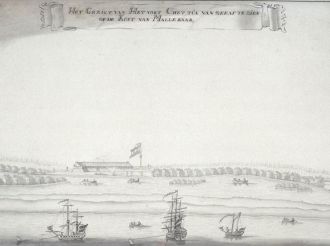
Chetwai - Search for a single slab
In 1714, with the help of local rulers and permission from the kingdom of Kochi, the VOC had a fort built at Chetwai.[1]
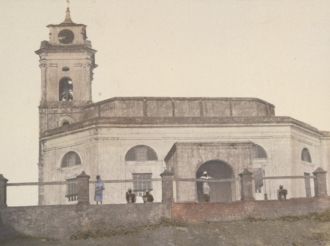
Hooghly - Funerary hatchments
In 1742, Jan Albert Sichterman, VOC director of Bengal, had a clock tower built on the banks of the Hooghly, after he had already decided to fortify the factory. In 1767, George Lodewijk Vernet, then director of Bengal, had an octagonal church built adjacent to the tower.
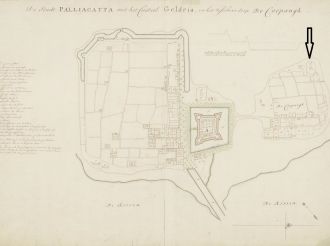
Pulicat - Buitenkerkhof
Pulicat is nowadays a small fishing village on the Coromandel Coast, consisting of two connected islands. In the Chola Empire, a Tamil dynasty from the second to the thirteenth century in southern India, Pulicat developed into an important port. Later, from the fourteenth century, Pulicat became part of the kingdom of Vijayanagara.


